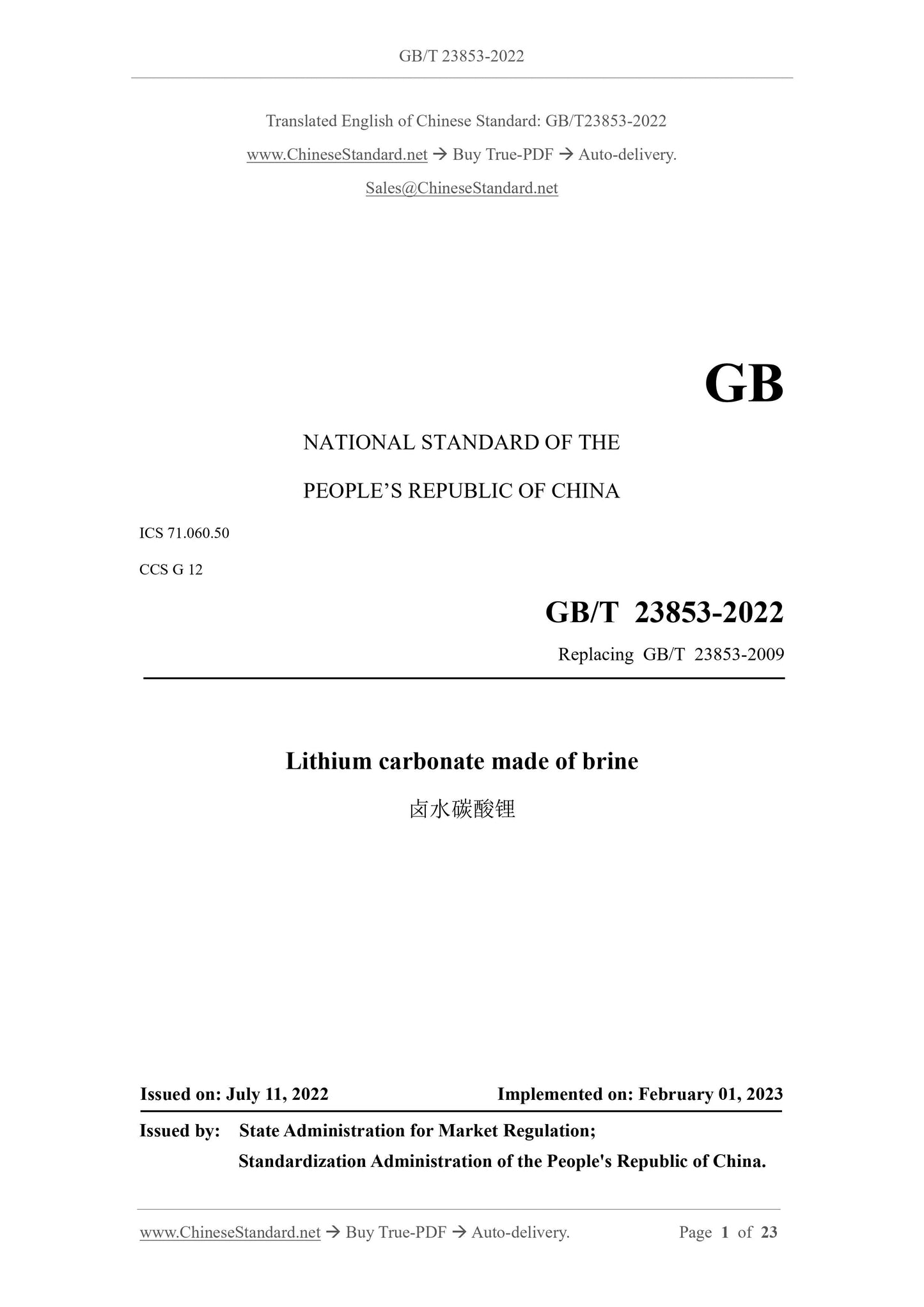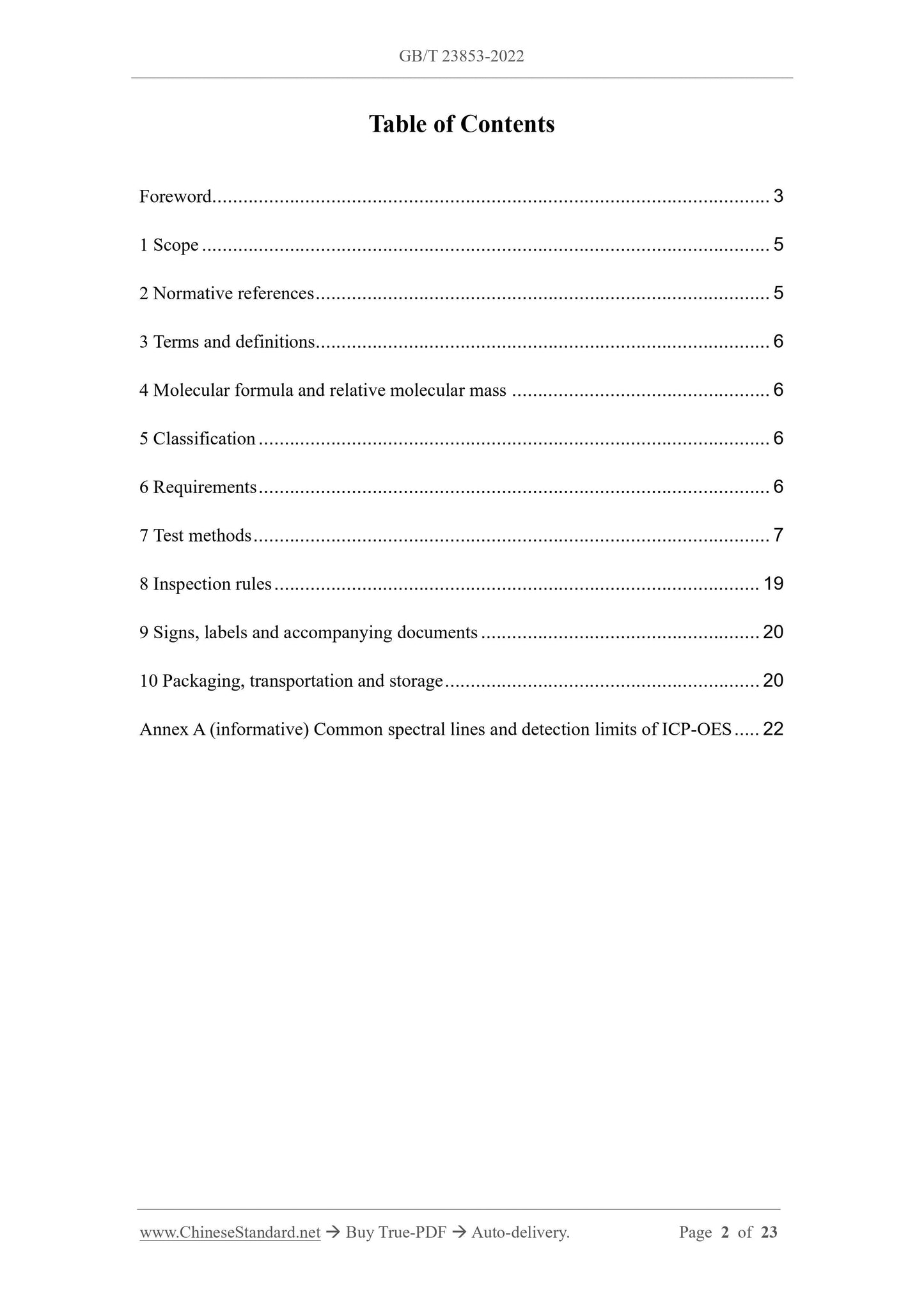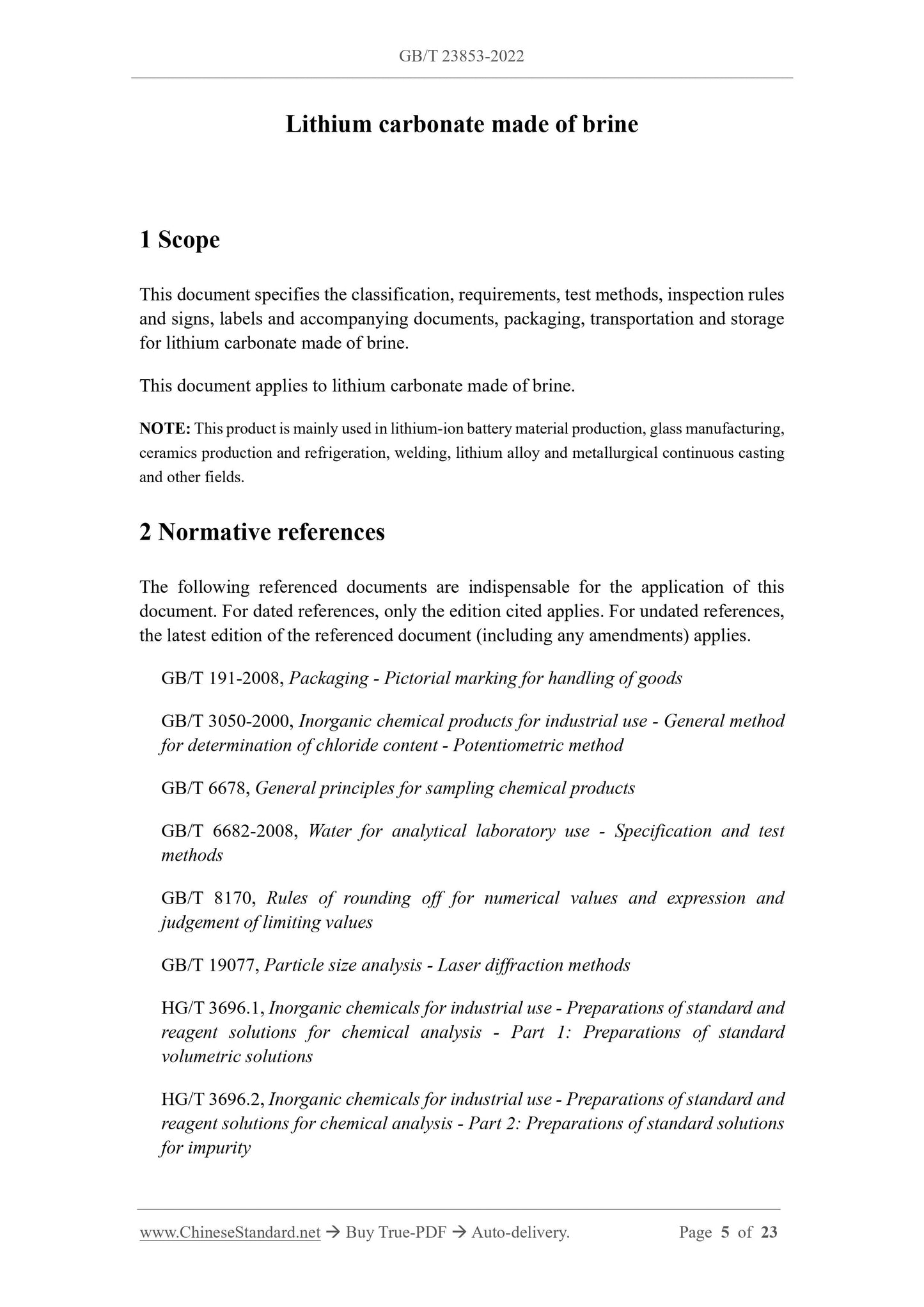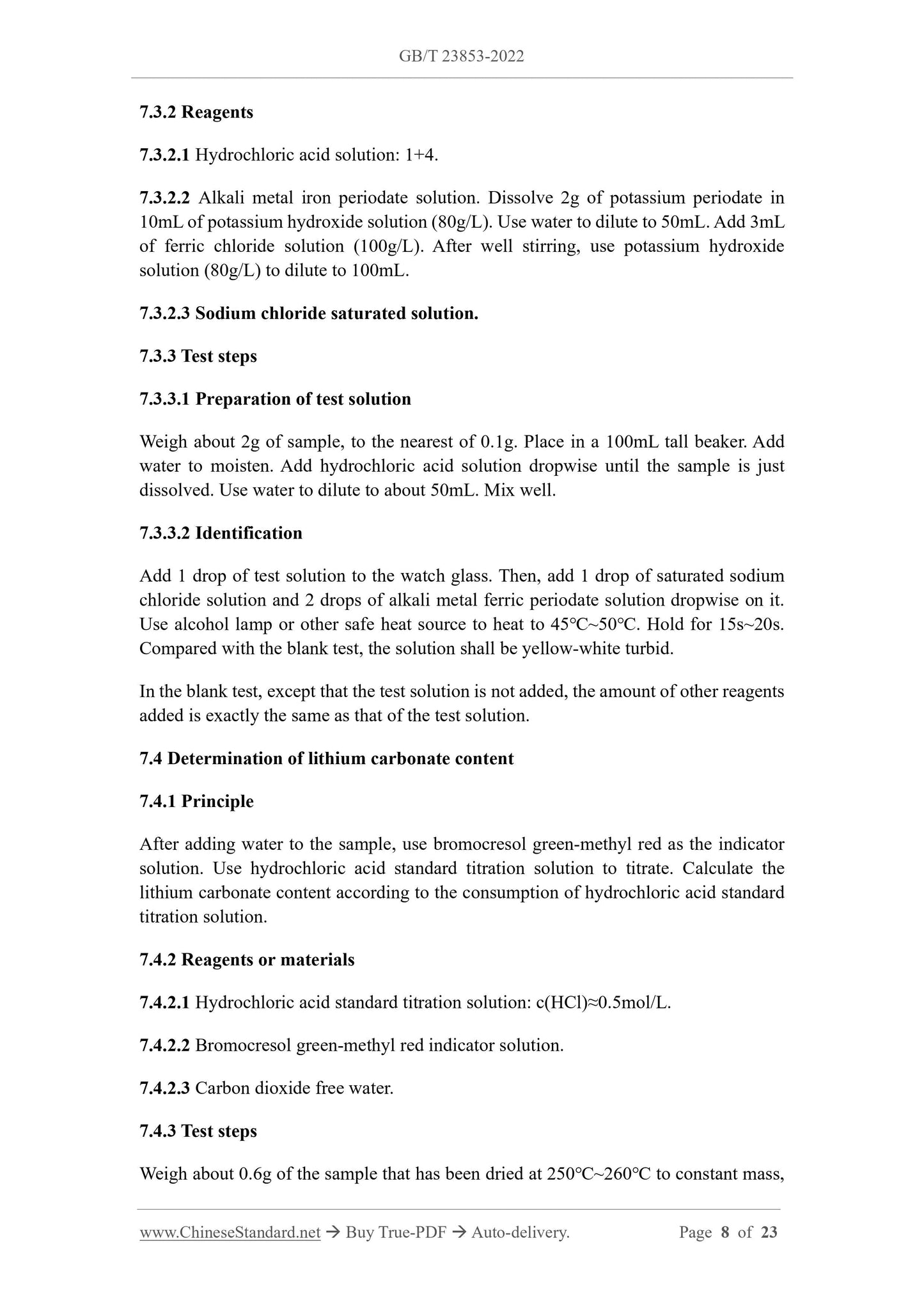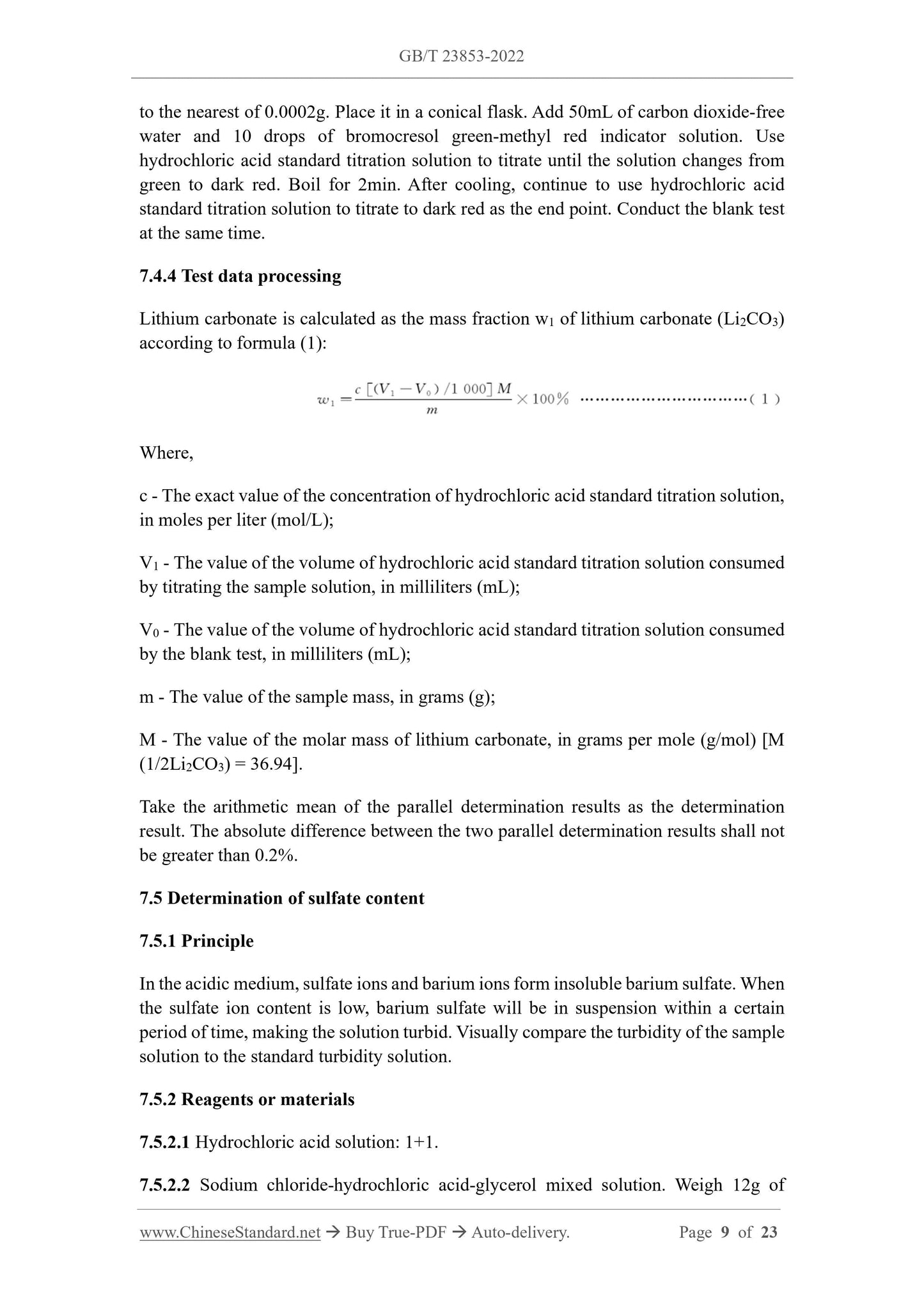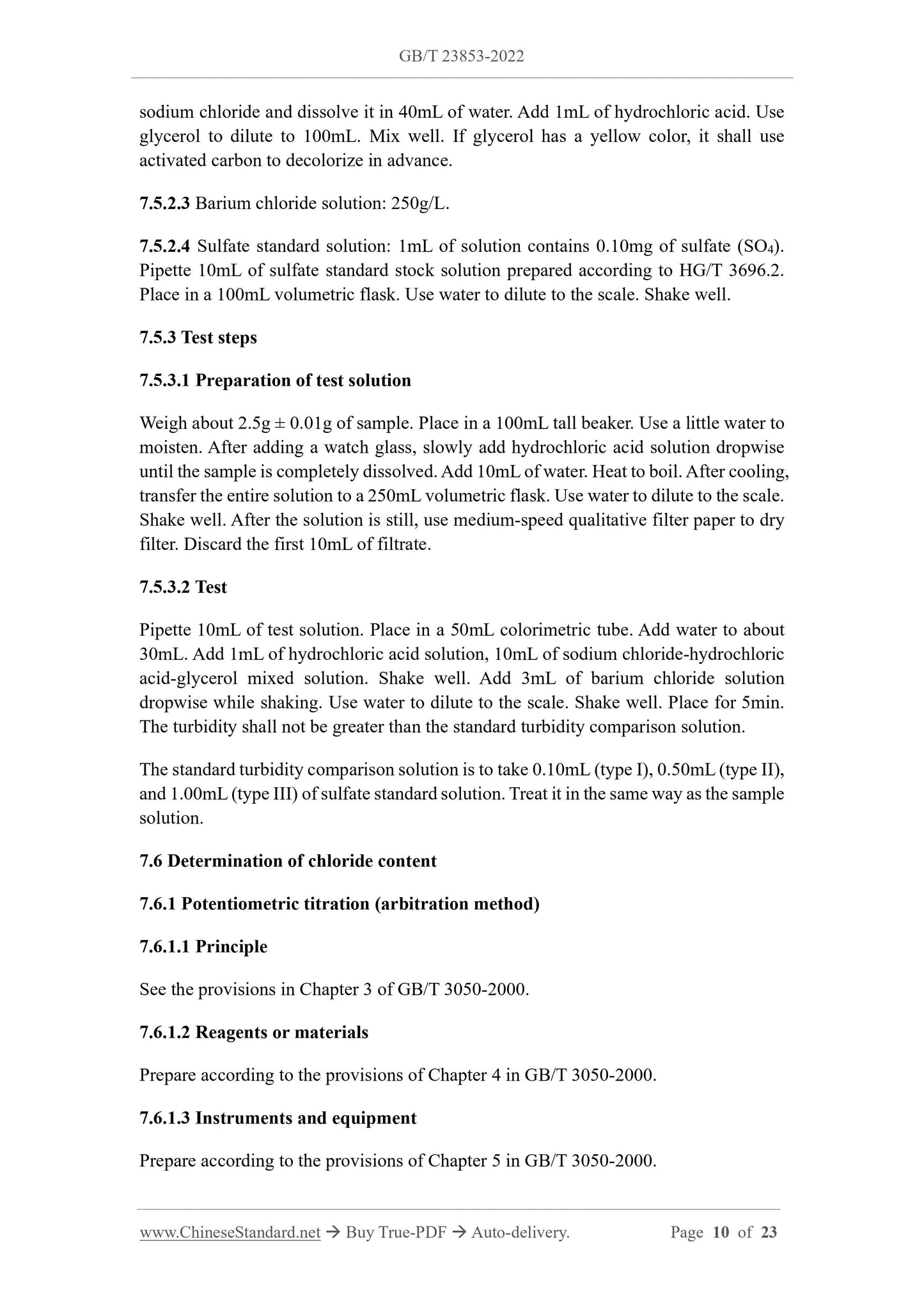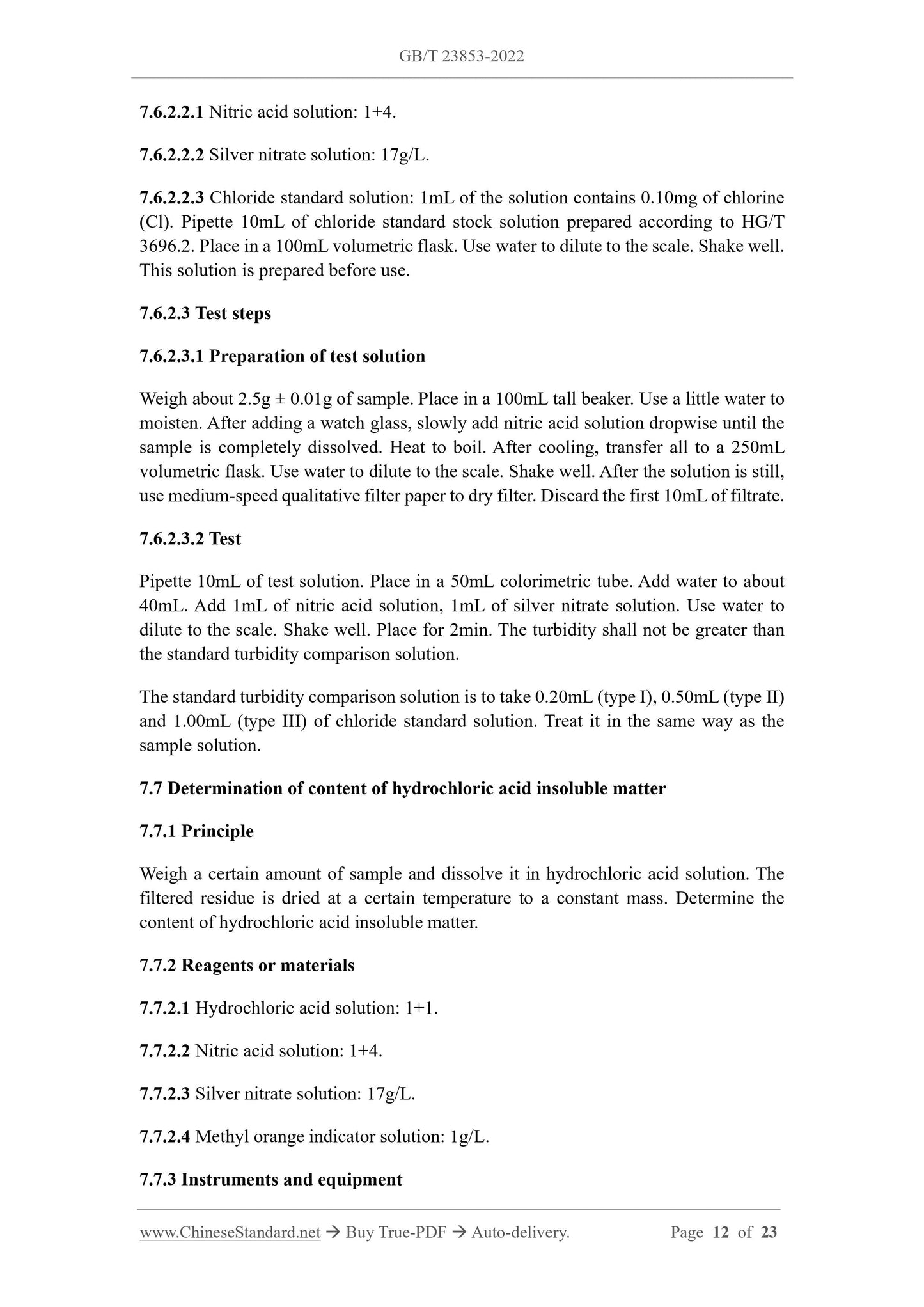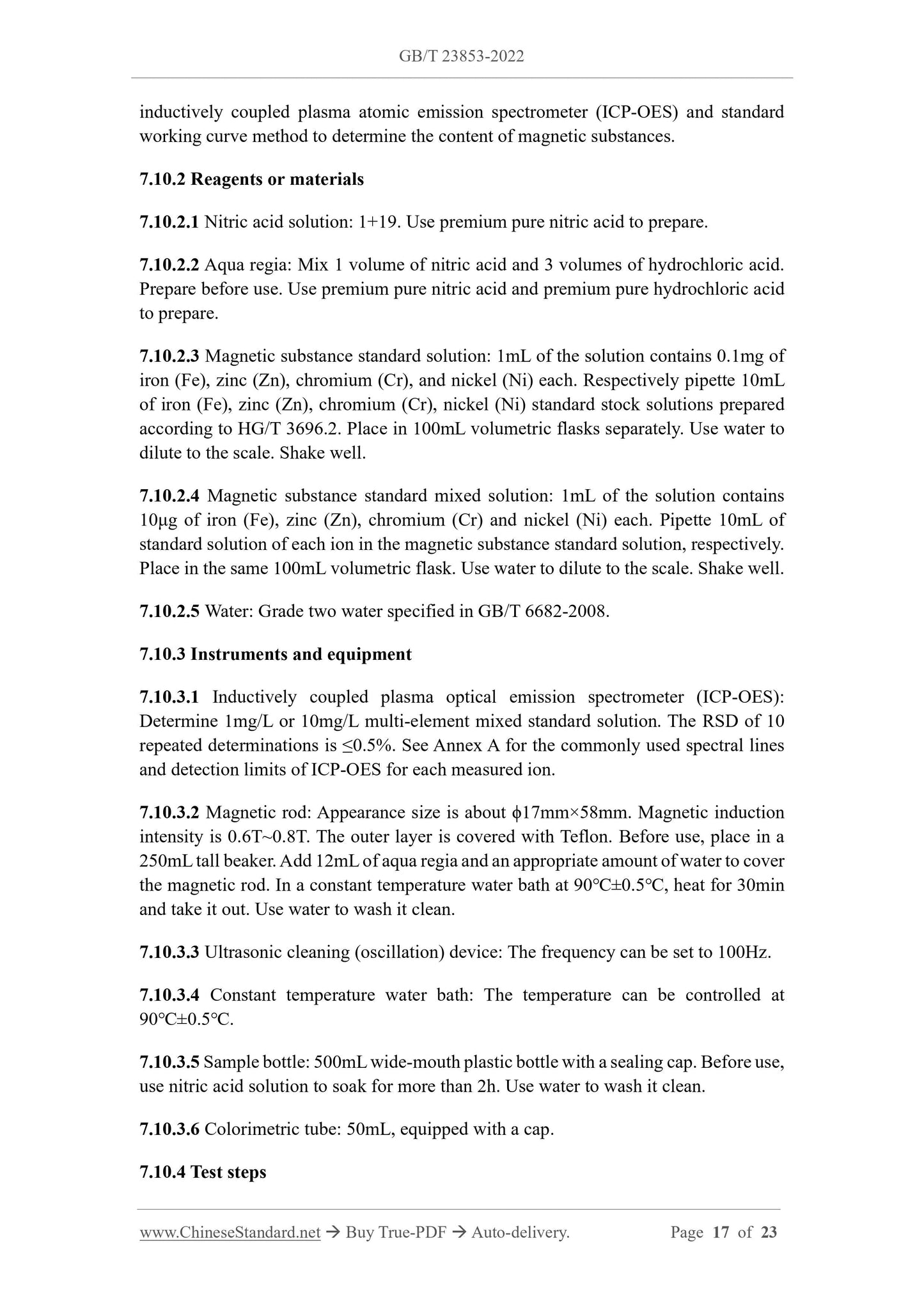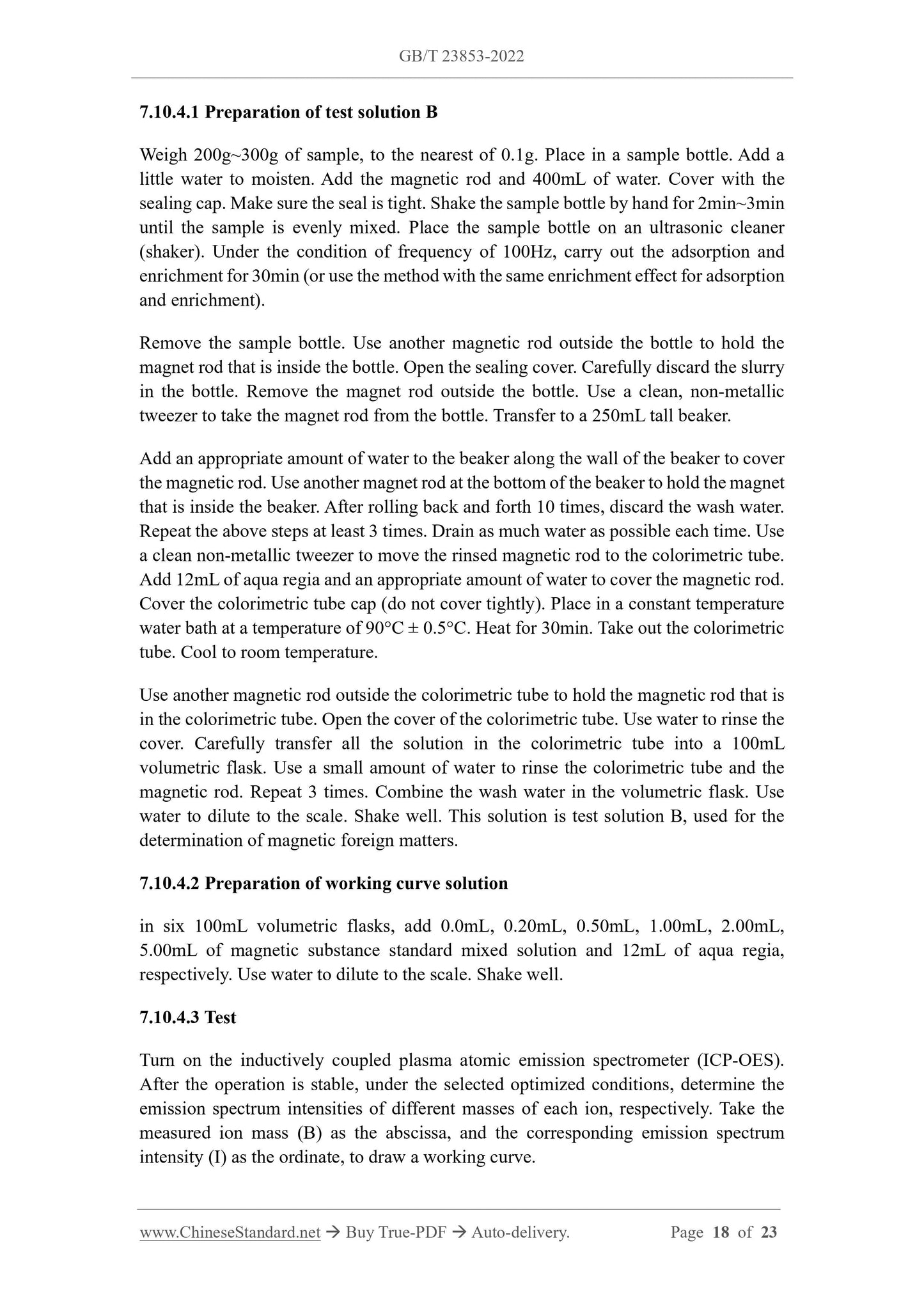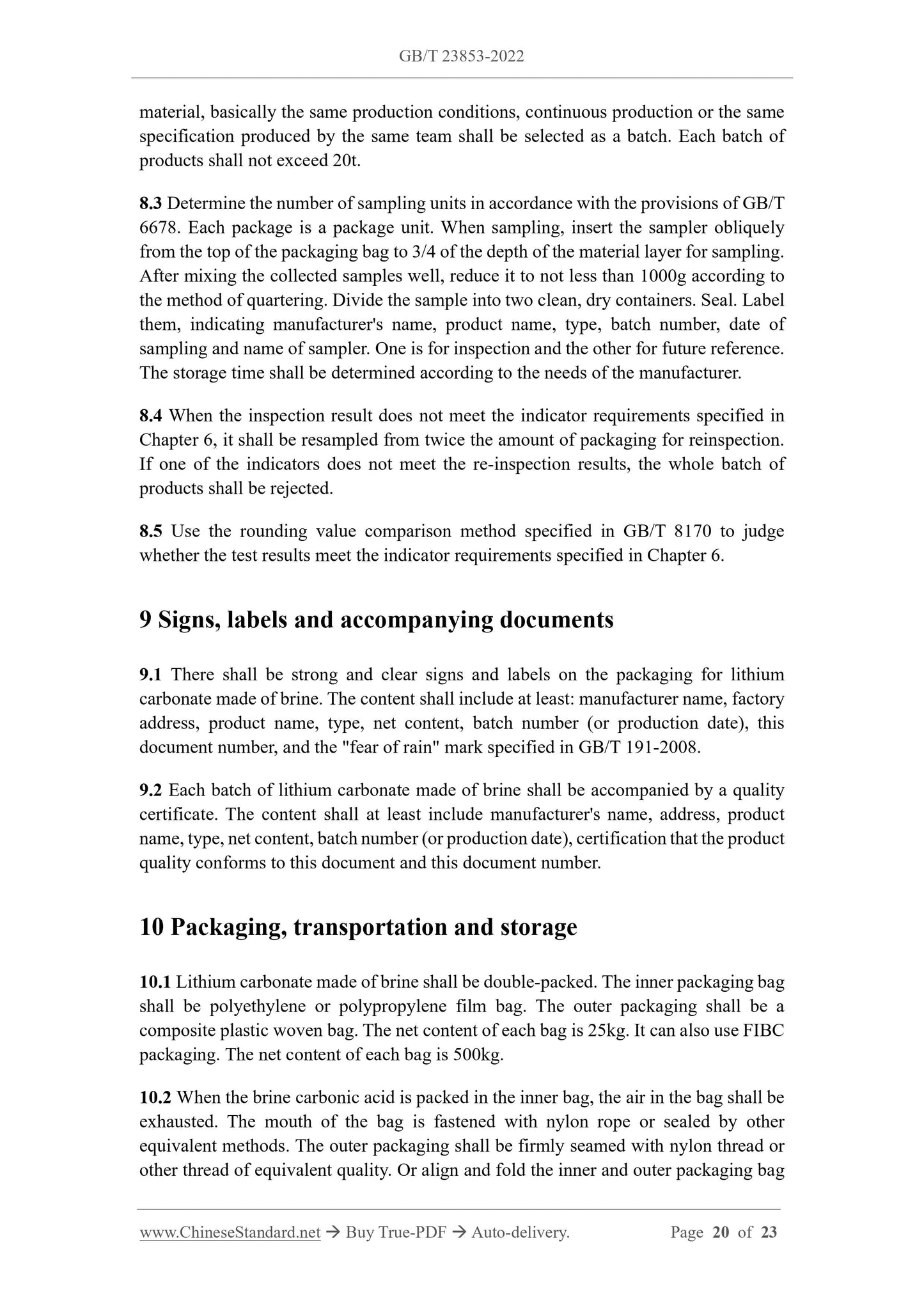1
/
of
11
www.ChineseStandard.us -- Field Test Asia Pte. Ltd.
GB/T 23853-2022 English PDF (GB/T23853-2022)
GB/T 23853-2022 English PDF (GB/T23853-2022)
Regular price
$205.00
Regular price
Sale price
$205.00
Unit price
/
per
Shipping calculated at checkout.
Couldn't load pickup availability
GB/T 23853-2022: Lithium carbonate made of brine
Delivery: 9 seconds. Download (and Email) true-PDF + Invoice.Get Quotation: Click GB/T 23853-2022 (Self-service in 1-minute)
Newer / historical versions: GB/T 23853-2022
Preview True-PDF
Scope
This document specifies the classification, requirements, test methods, inspection rulesand signs, labels and accompanying documents, packaging, transportation and storage
for lithium carbonate made of brine.
This document applies to lithium carbonate made of brine.
NOTE: This product is mainly used in lithium-ion battery material production, glass manufacturing,
ceramics production and refrigeration, welding, lithium alloy and metallurgical continuous casting
and other fields.
Basic Data
| Standard ID | GB/T 23853-2022 (GB/T23853-2022) |
| Description (Translated English) | Lithium carbonate made of brine |
| Sector / Industry | National Standard (Recommended) |
| Classification of Chinese Standard | G12 |
| Word Count Estimation | 15,114 |
| Issuing agency(ies) | State Administration for Market Regulation, China National Standardization Administration |
Share
